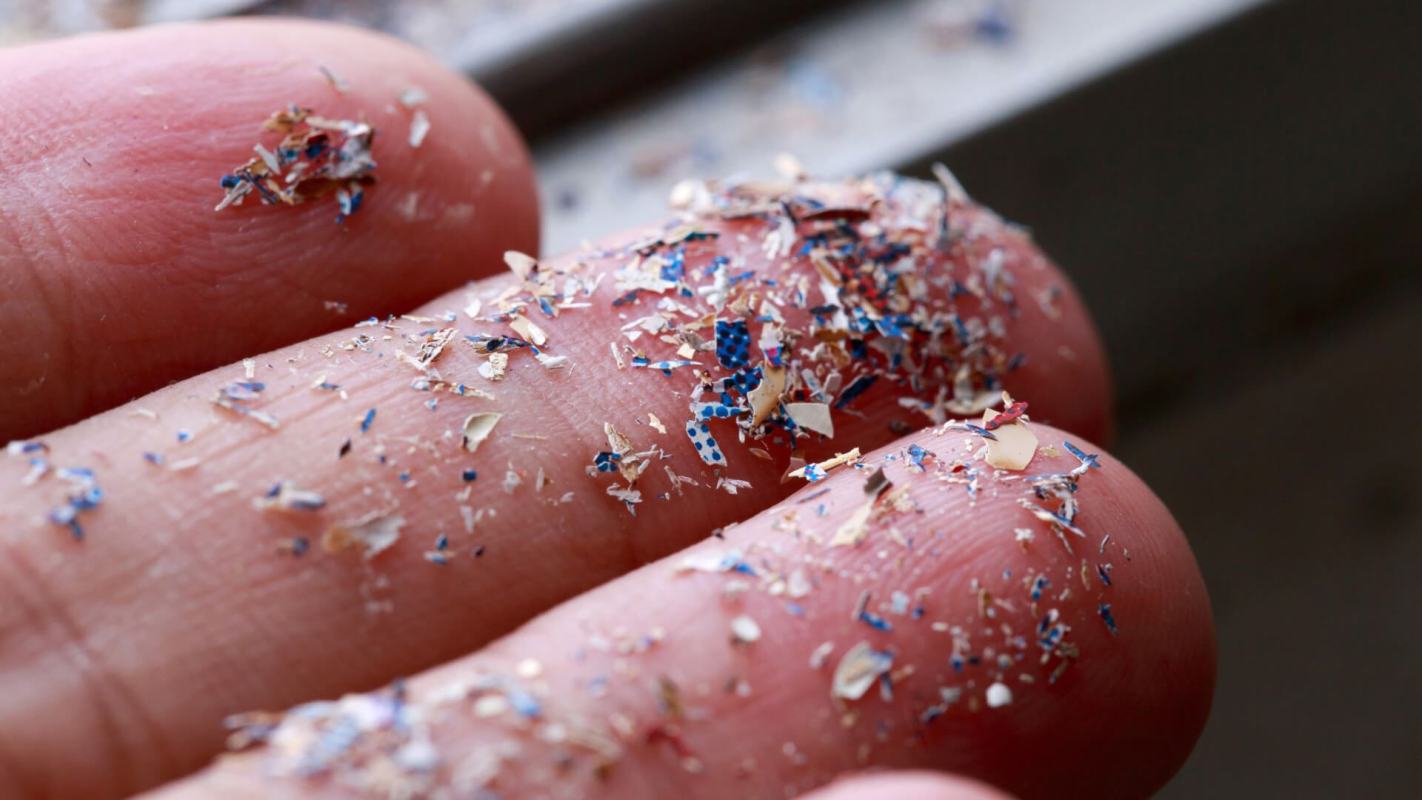There's currently a massive problem brewing in our oceans caused by the teeny tiniest of all suspects — microplastics.
What are microplastics?
Microplastics are tiny plastic particles less than 5 millimeters in length — the diameter of a pencil-top eraser — that are incredibly invasive.
They have been found in remote crevices of our environment, from the deep ocean depths of the Mariana Trench to the heights of our atmosphere, and even inside our bodies.
The fossil fuel–derived materials that make up synthetic plastic don't occur within nature, so no naturally occurring organism can break them down. The plastic will only break down into smaller pieces.
Tiny plastic particles directly released into the environment are primary microplastics, such as microbeads, nurdles, microfibers, and foam.
When large plastic pieces break down in nature, these fragments are secondary microplastics.
Plastic microfibers are the largest source of microplastics in the environment today. Research suggests that flakes of paint could be one of the largest sources of microplastics in the ocean.
Why do we care about microplastics?
These tiny pollutants are proving to be a massive issue.
A team of scientists found 24.4 trillion pieces of microplastics — though the actual amount is likely to be much higher — just in our oceans, forming a plastic soup.
The small size of microplastics allows them to invade the environment. To date, microplastics are in the stomachs of various wildlife, the air, soil, tap water, oceans, bottled water, beer, and the fish we eat.
And because of this small size, microplastics can be nearly impossible to clean up. It takes far more effort and resources to remove microplastics from the environment than to remove larger pieces of plastic.
Experts are still uncertain if microplastics are a danger to human or animal health — and if they are, we don't know how or to what degree these plastic particles can harm us.
Albert Koelmans, an environmental scientist at Wageningen University, said, "if you ask me about risks, I am not that frightened today, but I am a bit concerned about the future if we do nothing."
Ways to help fight microplastics
There are ways you can help reduce the production of microplastics and prevent them from entering our environment.
One of the easiest ways to tackle microplastics is through your clothes by opting for more natural, organic fiber clothes when you can, or even washing synthetic fabrics less frequently.
Laundry balls, wash bags, and microplastic washing machine filters can intercept microplastics in your laundry.
Another way to help is by reducing the amount of plastic you buy or use, such as investing in a reusable water bottle.
Operations like Mr. Trash Wheel and scientific discoveries, such as magnetic liquids used to collect small plastic particles, are also aiding in the fight against microplastics.While individuals do their part to fight microplastics, companies and industries must do the same by using plastic alternatives and operating or producing under a circular model.
Follow The Cool Down on Instagram and subscribe to our newsletter.








